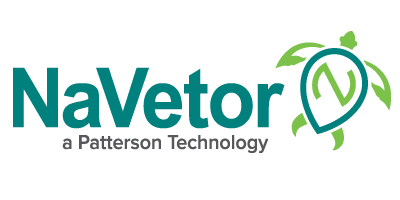For as long as veterinarians have had practices, staff turnover has been a challenge. However, its impacts have never been more pronounced since the Covid-19 pandemic, when many employees reprioritized their lives and careers. Turnover is costly and time consuming, not only after previous employees leave, but also when new employees come aboard and need to be trained.
Veterinarians are busy and justifiably concerned that training new employees will take too much time away from their already packed schedules. Yet, training has never been more important. With high staff turnover impacting many industries, employers are refocusing on employee engagement and training—even from the very beginning.
To help efficiently train new employees so that they are excited and engaged, without taking an exorbitant amount of time away from patients and clients, veterinarians can leverage resources within their practice management software. Here are three ways to use your software to maximize efficiencies in your practice:
1. Software Training Videos and Webinars
Training videos from software providers are simple, inexpensive ways to get new staff trained up on practice management software, without taking up hours of your day. These videos are particularly helpful when they are available on demand and have the built-in flexibility to be completed when time allows.
For example, NaVetor offers role-specific training videos for veterinarians, vet techs, and front-office staff. With these videos, new staff members can see firsthand what they need to know to accomplish their tasks in NaVetor. And, these videos are included with your NaVetor subscription.
2. Automating Entries
It’s no secret that automation makes our lives easier overall. And in a veterinary practice, the more routine tasks are automated, the less training is needed for those tasks. Automating your appointment calendar is one way to save time. For example, with online appointment requests, where clients can select an open slot on your website, enter their relevant information, and make the appointment, it automatically shows up in your calendar. The appointment is made and the calendar is updated, without any need to train someone on how to book the appointment. (They just may need to confirm the appointment once the schedule is approved by you.)
Another effective way to automate entries is to set up consistent services and charges as part of an Appointment Type. Once that Appointment Type is scheduled for a client, those services and charges automatically flow into the SOAP and the invoice (and they can always be removed if the patient does not need them). Estimates can also be quickly generated from Appointment Types using the same system. This process is foolproof for both novice and experienced staff members, substantially reducing the amount of time needed for training.
3. Templates
Templates help staff members follow standard appointment procedures. They are especially helpful for lab tests and results if you do not have a bi-directional integration in your practice. Templates standardize workflow, provide consistency in all operational matters, help reduce manual entry errors, and are the powerhouse behind efficient veterinary practices.
Widely available features such as auto-populate, short text, and picklists make templates one of the best ways to increase efficiency and save time, including time spent training new staff. With templates, it becomes easier for staff members to adopt protocols and procedures, helping to ensure consistency even among the newest employees. (Don’t miss what several software providers had to say about maximizing the use of templates in the January, 2022 issue of AAHA’s Trends magazine.)
If you’d like to explore ways that NaVetor can help ease the training process for new employees and help your practice run more efficiently, request a demo today.
Request a Demo
Inspired by what you’ve seen? Interested in seeing how NaVetor can work in your practice? Contact us to set up a personalized demonstration of the software.
Sales: 877-422-8838

